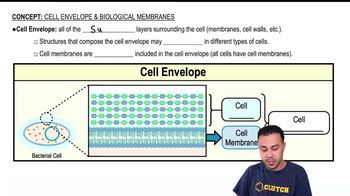Which of the following does not kill endospores?
a. autoclaving
b. incineration
c. hot-air sterilization
d. pasteurization
e. All of the above kill endospores.
 Verified step by step guidance
Verified step by step guidance



Which of the following does not kill endospores?
a. autoclaving
b. incineration
c. hot-air sterilization
d. pasteurization
e. All of the above kill endospores.
Which of the following is most likely to be bactericidal?
a. membrane filtration
b. ionizing radiation
c. lyophilization (freeze-drying)
d. deep-freezing
e. all of the above
Which of the following is most effective for sterilizing mattresses and plastic Petri dishes?
a. chlorine
b. ethylene oxide
c. glutaraldehyde
d. autoclaving
e. nonionizing radiation
Which of the following cannot be used to sterilize a heat-labile solution stored in a plastic container?
a. gamma radiation
b. ethylene oxide
c. supercritical fluids
d. autoclaving
e. short-wavelength radiation
Which of the following is used to control microbial growth in foods?
a. organic acids
b. alcohols
c. aldehydes
d. heavy metals
e. all of the above
How do autoclaving, hot air, and ultra-high-temperature pasteurization illustrate the concept of equivalent treatments?